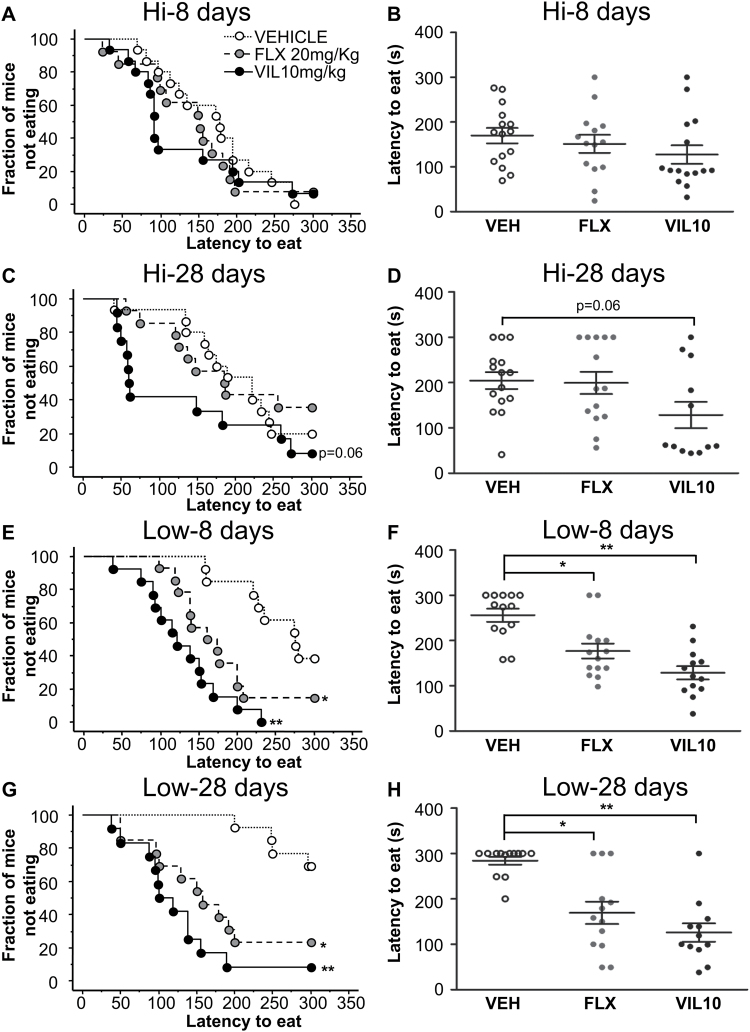Figure 4.
tetO-1A+/+/Pet-tTS+ mice on DOX continuously (Hi) and off DOX at P50 (Low): subchronic and chronic treatment effect on feeding latency in novelty suppressed feeding. At 8 days, no difference in mean latency was detected between vehicle and either fluoxetine (20mg/kg) or vilazodone (10mg/kg) in 5-HT1A Hi mice. (A-B) At 28 days of treatment, vehicle and fluoxetine groups have similar latencies. The vilazodone group has a lower latency that is not statistically different from the vehicle group (C,D) (8 days: n = 14–15 mice/group; 28 days: n = 12–15 mice/group). (E-F) The 5-HT1A Low mice responded robustly to both fluoxetine (20mg/kg) and vilazodone (10mg/kg) after only 8 days of treatment (n = 13–14 mice/group). (G-H) In 5-HT1A Low mice, chronic (28-d) treatment with either fluoxetine or vilazodone significantly reduced feeding latency in the novelty suppressed feeding (NSF) arena (n = 12–13 mice/group). (A,C,E,G) Kaplan-Meier cumulative survival curve. (B,D,F,H) Scatter graph depicting individual animal latencies with mean and SEM (*P<.05 vs vehicle, **P<.01 vs vehicle).

